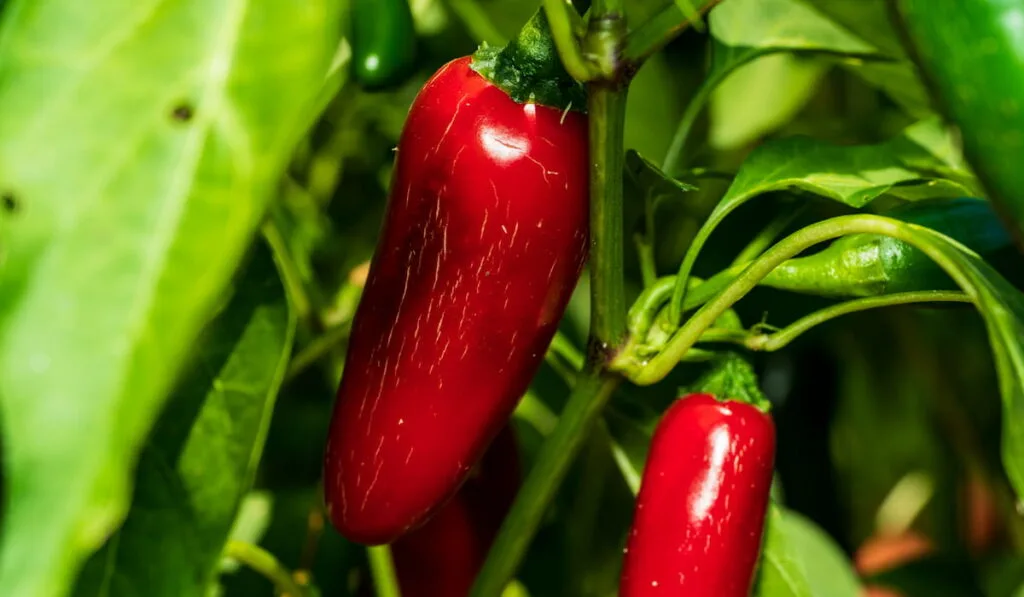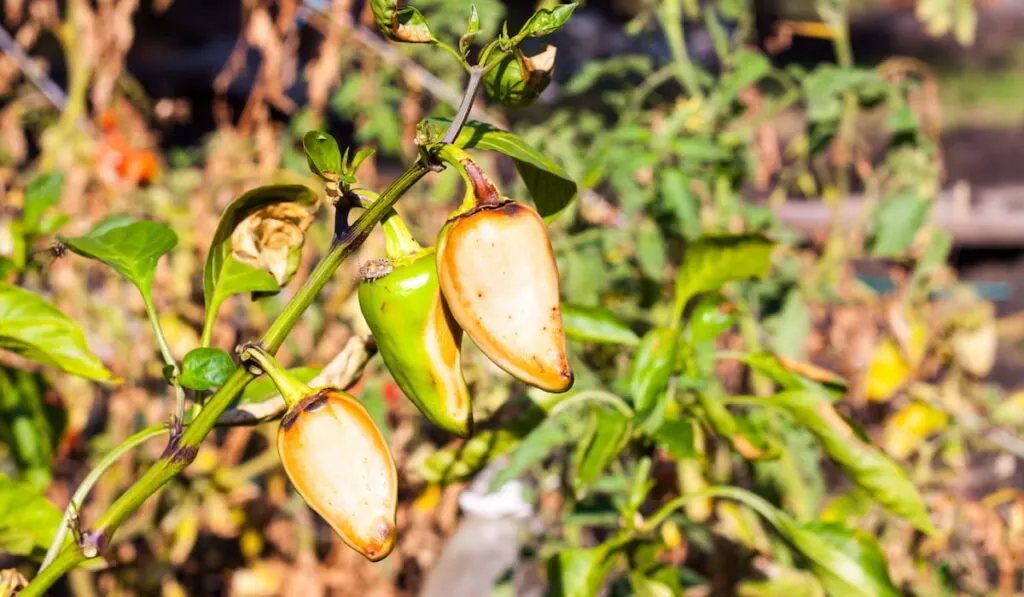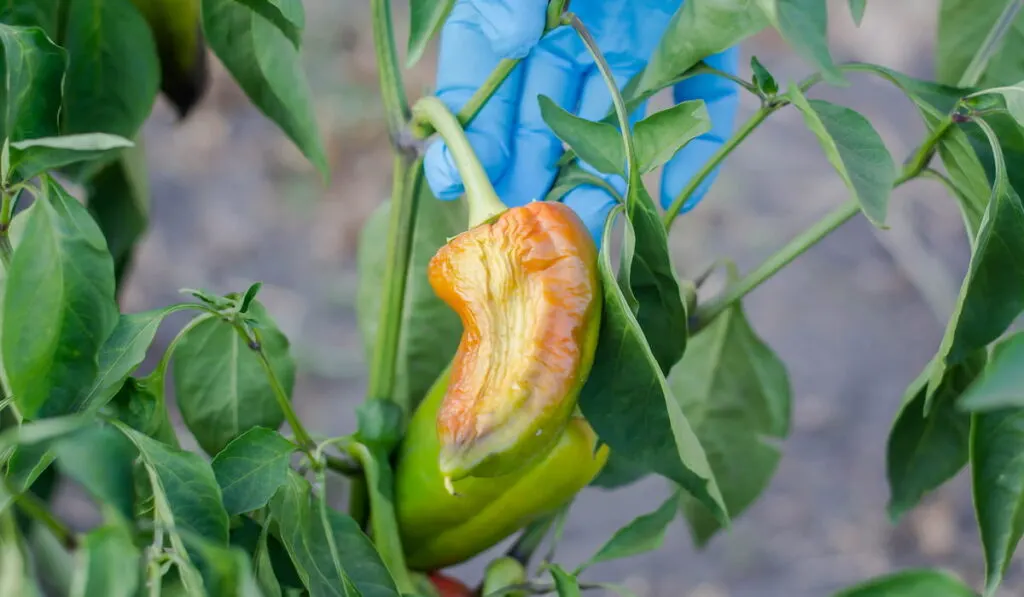Jalapenos are a robust plant that is terrific for people planting their first garden or who want something simple to grow indoors. They’re easy to plant and grow quickly. In addition, jalapenos offer great bang for your buck. They produce a lot of peppers on a fairly small plant that you can use for everything from salsa to pickled jalapenos.
However, some people who grow jalapenos have an interesting issue; their jalapenos start turning dark on the vine. Sometimes black jalapenos are no big deal. Other times, black jalapenos indicate you have a problem with the peppers.

Addressing the problem of black jalapenos early and in the proper manner can help you keep your plants healthy and avoid spoiling all your peppers. In addition, how you react can keep your plants in great shape and save other peppers from spoiling.
If you’re struggling with black jalapenos, you’re in the right place! Here are some of the most common reasons jalapenos turn black and what you should do.
Table of Contents
Relax; it’s Part of the Process.
Some jalapenos turn black as they change from light green into their final red form. It’s not always a cause for alarm, though it’s understandable why people worry, especially if they weren’t expecting black peppers.

This tends to happen more to jalapenos that ripen later in the season. The peppers will turn black in certain parts before they go red.
People often pick jalapenos off the vine and eat them when they turn dark green. Dark green peppers have higher water content and a crisp, firm texture that people love.
That’s why you see so many green jalapenos everywhere. However, if you leave them on the vine longer, the peppers will eventually darken before they transition to a bright red color.
If you’re planning to use your peppers for salsa, stews, and other recipes where texture doesn’t matter that much, you can let your jalapenos grow on the stem for longer for a different flavor.
Too Much Sun Exposure
A lot of people are surprised when their peppers start to develop black or brown streaks before they’re ripe. This is because we all know that jalapenos and other pepper plants need a lot of sun exposure. However, there is always a point at which there is simply too much sun.

People in higher altitudes or other locations where the sun is especially strong often have to take measures to protect their peppers and keep them from spoiling before they are ripe.
Sometimes, you can combat the effects of the sun by giving your plants some basic shade. For example, you can fashion a piece of cardboard and place it over the plant to keep your jalapenos shaded. This should stop them from turning black and keep them growing normally.
Blossom End Rot
Blossom end rot is common enough in plants to have its own acronym (BER). BER happens on several plants but is primarily a concern with tomatoes. However, peppers can suffer from BER under certain circumstances.

BER is usually a sign that you’re not watering your jalapenos enough. People then overreact by overwatering, which is too much for the peppers to handle.
Jalapenos need a good amount of water. Therefore, the soil under and around your plant stems must always be moist. If it is dry to the touch or you fail to water enough, the bottom tips of your jalapenos will start to turn black.
However, you should avoid overreacting and overwatering if your plant or soil feels dry.
Insects
Insects can eat through jalapenos or lay their eggs in them, which can turn them black and cause other types of spoilage.

This isn’t as much of an issue with most jalapenos because insects don’t love eating spicy foods. Through evolution and experience, they know that hot peppers aren’t the tastiest item in a garden.
However, insects can target jalapeno plants if there aren’t other plant options around. For example, if you’re growing your jalapenos indoors, insects in your house may not have other foods to eat and may hence, turn to your jalapenos for food. Also, younger jalapenos may not be as hot as mature peppers, so bugs could target them before they’re too spicy to eat.
Skin damage on your jalapenos from insects can lead to the pepper turning black. You may face a pest issue requiring special attention and specific products designed to kill and deter insects.
Some Jalapenos Are Naturally Black
Some types of jalapenos are naturally much darker in color than others. Some people grow varieties called “purple jalapenos” that can look black when growing before they ripen. This is usually not a reason to worry.

Dark pods are normal on a jalapeno plant as long as there are no outward signs of damage, and you don’t notice any withering stems or leaves related to improper watering.
Diseased Jalapenos
Some diseases affect some plants no matter what you do. Sometimes, rot sneaks into your pepper plants and turns your jalapenos black before you can react.

This can be particularly disheartening for beginning gardeners. It is normal to feel frustrated when you spend months growing pepper plants, and the peppers end up spoiling because of some disease you have no control over.
There are specific diseases that affect several peppers by turning them black or even white. You will need to discard the entire plant to stop the disease from spreading into other parts of your garden.
Some common diseases that affect jalapeno plants include the mosaic virus and anthracnose infections.
Conclusion
Don’t lose hope if you see some of your jalapeno peppers turning black on the vine. While it’s cause for concern, it’s not always a problem.
The best thing you can do for your plant is to watch it regularly, keep it watered appropriately, and make sure it has the right amount of direct sun exposure. Sometimes problems happen in a garden, but following a regimen increases your chance of a successful pepper yield.
Thankfully, jalapenos and other peppers are very beginner-friendly. Once you are successful with growing jalapenos, you’ll be more inclined to try to grow other garden vegetables.
